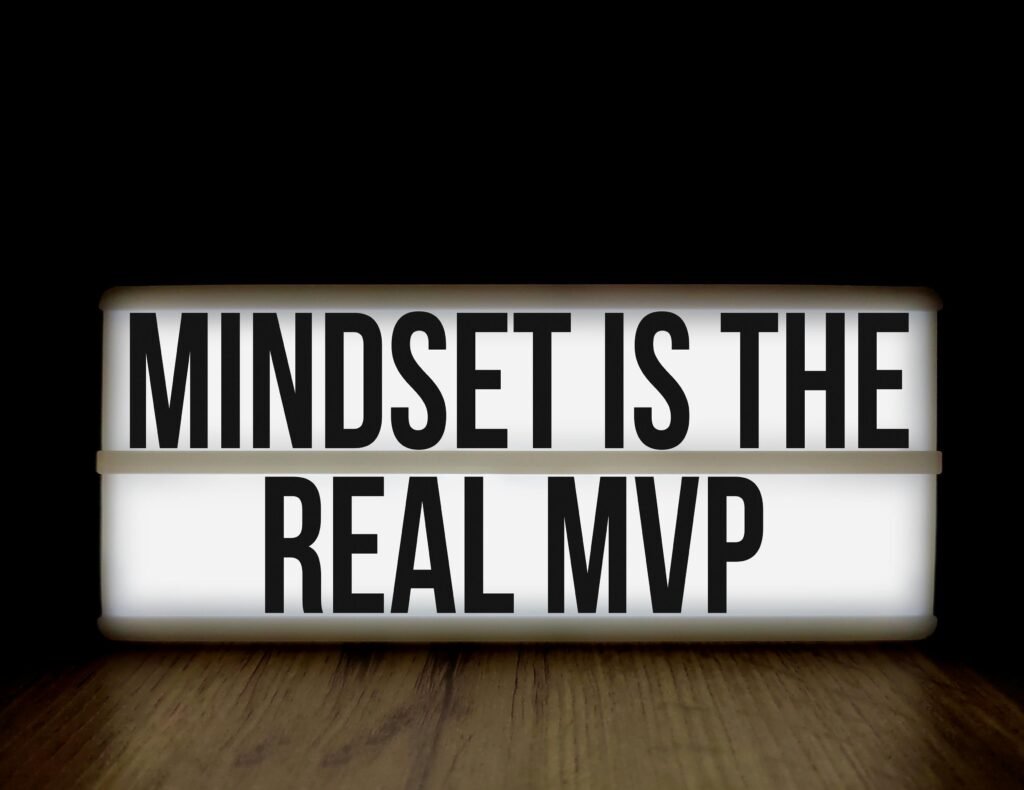
Introduction to Self-Improvement Mindset
In today’s ever changing world, fostering a mindset dedicated to self-improvement is more critical than ever.
It’s the key to unlocking your true potential and navigating life’s challenges with a sense of purpose and resilience.
This mindset isn’t just about aiming for lofty goals; it’s about adopting everyday habits and mental frameworks that drive continuous progress.
The journey of self-improvement starts with a commitment to bettering yourself.
It requires a proactive approach to identifying areas for growth and implementing strategies to address them.
This proactive mindset fuels personal growth by transforming challenges into opportunities for learning and development.
One effective strategy is to cultivate a strong sense of self-awareness.
Understanding your strengths and weaknesses allows you to tailor your improvement efforts more effectively.
Additionally, it helps you recognize patterns in your behavior that might be holding you back, enabling you to make more informed decisions.
Another key aspect of a self-improvement mindset is the willingness to step out of your comfort zone.
Growth often happens when you push beyond familiar boundaries and tackle new experiences.
This not only enhances your skillset but also builds resilience, making you better equipped to handle future challenges.
It’s also important to focus on incremental progress.
Rather than aiming for overnight transformations, concentrate on making small, consistent improvements.
This approach ensures that changes are sustainable and less overwhelming, keeping you motivated over the long term.
Lastly, fostering a mindset geared toward self-improvement involves surrounding yourself with supportive influences.
Whether it’s mentors, peers, or family, having a network that encourages your growth can provide valuable insights and motivation.
This collective support amplifies your efforts and helps you stay on track toward achieving your goals.
Setting Clear and Specific Goals

Setting clear and specific goals is essential for turning aspirations into tangible results. The first step is to break down large objectives into smaller, manageable tasks.
This makes them less intimidating and provides a clear path forward.
The SMART goals framework—Specific, Measurable, Achievable, Relevant, Time-bound—is an effective tool for ensuring that your goals are well-defined and reachable.
For example, instead of setting a vague goal like “get in shape,” refine it using the SMART criteria: “I will lose 10 pounds in three months by exercising three times a week and following a balanced diet.”
This goal is specific, measurable, achievable, relevant to your health, and time-bound.
Another strategy is to write down your goals. Studies have shown that writing goals increases the likelihood of achieving them.
It solidifies your commitment and serves as a constant reminder of what you’re working towards. Keeping your goals visible, whether in a journal or on a whiteboard, can also help maintain focus.
Visualizing the steps required to achieve your goals can further clarify the path ahead.
Creating a detailed action plan breaks down the process into actionable items.
This not only organizes your efforts but also provides a sense of accomplishment as you check off each step.
Lastly, be flexible and willing to adjust your goals as needed.
Life is unpredictable, and circumstances may change.
Revisiting and refining your goals periodically ensures they remain aligned with your current situation and priorities.
This adaptability keeps you on track and focused, even when challenges arise.
Cultivating Positive Habits

Positive habits are the building blocks of personal growth.
Identify and develop habits that support your goals.
For example, if you’re aiming to improve your health, incorporate regular exercise and balanced eating into your daily routine.
Replace negative habits with positive ones by practicing mindfulness, which involves focusing on the present moment without judgment.
Focus on consistency when building new habits.
Small, repeated actions are more effective than occasional large efforts.
For example, instead of trying to overhaul your diet in one day, make gradual changes like adding more vegetables to your meals.
Over time, these small adjustments become second nature.
Another effective method is to pair new habits with existing ones.
Known as habit stacking, this technique involves attaching a new behavior to a routine activity.
For instance, if you want to start meditating, do it right after brushing your teeth in the morning.
This creates a natural trigger, making it easier to maintain the new habit.
Accountability can also enhance habit formation.
Share your goals with friends or join a group with similar aspirations.
Having a support network encourages you to stay committed and provides motivation during challenging times.
Lastly, use positive reinforcement to encourage yourself.
Celebrate small milestones along the way.
Whether it’s treating yourself to a favorite activity or acknowledging your progress in a journal, positive reinforcement boosts motivation and solidifies new habits.
Practicing Self-Discipline

Self-discipline is vital for staying focused and avoiding distractions.
Start by creating an environment that supports your goals.
Remove potential disruptions from your workspace and organize it to encourage productivity.
Establish specific time slots for tasks and adhere to them diligently.
This routine helps you develop a consistent pattern of behavior, making it easier to stay on track.
Next, prioritize your tasks.
Use tools like to-do lists or digital planners to rank tasks by importance and urgency.
By tackling high-priority items first, you ensure that critical objectives receive the attention they deserve.
This structured approach can also reduce stress by providing a clear roadmap for your day.
Mindfulness practices can further enhance your self-discipline.
Techniques such as deep breathing or brief meditation sessions can help you center your mind and regain focus.
Taking short, mindful breaks throughout your day can prevent burnout and maintain your productivity levels.
Accountability is another powerful tool for cultivating self-discipline.
Share your goals and progress with a trusted friend or mentor.
Their encouragement and feedback can keep you motivated and accountable, providing an extra layer of commitment to your objectives.
Lastly, be patient with yourself.
Developing self-discipline is a gradual process that requires consistent effort.
Celebrate small wins along the way and recognize the progress you’re making.
This positive reinforcement builds momentum and strengthens your resolve, helping you maintain discipline over the long haul.
Harnessing the Power of Visualization

Visualization is a highly effective technique for boosting motivation and self-confidence.
By creating a vivid mental image of your success, you can drive yourself towards your goals with greater determination.
Start by picturing the details of your desired outcome as clearly as possible.
This mental rehearsal primes your brain to recognize and seize opportunities that align with your aspirations.
Incorporating vision boards into your routine can also amplify the power of visualization.
A vision board serves as a visual representation of your goals and dreams, featuring images and words that symbolize what you want to achieve.
Place it somewhere you’ll see daily, like your workspace or bedroom.
This constant visual reminder helps to keep your goals front and center in your mind.
Another practical approach is to use guided visualization exercises.
These can be found through various apps or online resources and typically involve a narrator guiding you through a detailed scenario of achieving your goals.
This practice not only enhances your focus but also builds a stronger emotional connection to your objectives.
Engaging all your senses during visualization can further solidify this technique’s impact.
Imagine not just the sights, but also the sounds, smells, and even the feelings associated with your success.
This multi-sensory experience makes the visualization more real and compelling, increasing your motivation to turn it into reality.
Lastly, combine visualization with affirmations.
Positive statements about your abilities and future successes can reinforce the mental images you create, making your visualizations even more powerful.
Embracing Failure as a Learning Tool

Failure can be a valuable learning tool when approached with the right mindset.
Rather than viewing it as a setback, see it as an opportunity to gain insights and grow.
Analyze what didn’t go as planned and identify the lessons embedded within the experience.
This reflection not only enhances your understanding but also builds resilience.
For instance, if you didn’t meet a work deadline, examine the factors that contributed to the delay.
Were there issues with time management, unexpected challenges, or gaps in your knowledge?
By pinpointing the root causes, you can develop strategies to improve in these areas, making you better equipped for future tasks.
It’s also beneficial to detach your self-worth from your failures.
Remember that failing at a task doesn’t mean you’re a failure as a person.
This distinction allows you to approach your mistakes more objectively, making it easier to learn from them.
Additionally, sharing your failures with others can provide fresh perspectives and advice.
Discussing what went wrong with a mentor or a peer can offer new insights you might not have considered.
They can help you see the situation from a different angle, enriching your learning process.
Lastly, embrace a curious mindset. Approach each failure with a sense of curiosity about what it can teach you.
This attitude turns every misstep into a stepping stone towards personal growth, making the journey more rewarding and less daunting.
Fostering a Growth Mindset

A growth mindset enables you to adapt and learn in any situation.
Understanding the difference between a growth mindset and a fixed mindset is essential.
A growth mindset views abilities and intelligence as qualities that can be developed through dedication and hard work.
This perspective fosters a love for learning and resilience, traits that are invaluable for great accomplishment.
To cultivate a growth mindset, start by embracing challenges as opportunities to improve.
When you encounter obstacles, remind yourself that persistence is key.
Reflect on past successes where perseverance paid off to reinforce this belief.
Replace negative self-talk with constructive feedback. Instead of saying, “I’m not good at this,” try, “What can I do to improve?”
Another strategy is to view effort as a path to mastery.
Understand that putting in the effort is not a sign of inadequacy but rather a step towards skill development.
Additionally, learn to celebrate the success of others.
Instead of feeling threatened by others’ achievements, view them as sources of inspiration and learning.
Feedback is another crucial element. Actively seek feedback and use it to make informed adjustments.
This openness to feedback accelerates growth and development.
The Role of Self-Compassion in Improvement

Self-compassion is a vital component of personal growth.
When you treat yourself with kindness and understanding, especially during setbacks, you create a supportive internal environment that fosters resilience and continuous improvement.
Rather than being overly critical, acknowledge that everyone faces challenges and that these experiences are opportunities for learning and growth.
Start by practicing mindfulness, which helps you stay present and non-judgmental about your experiences.
When you make a mistake, instead of focusing on self-criticism, recognize the lesson it offers and how it can contribute to your overall growth.
Another effective strategy is to maintain a balanced perspective.
Accept that perfection is unattainable and that striving for it can lead to unnecessary stress.
Instead, set realistic expectations for yourself, understanding that progress often involves a series of small, incremental steps rather than giant leaps.
Additionally, engage in positive self-talk.
Replace negative, self-defeating thoughts with affirmations that reinforce your capabilities and potential.
For example, rather than thinking, “I’ll never get this right,” try, “I can improve with practice and effort.”
Finally, allow yourself to take breaks and recharge.
Overworking can lead to burnout, which impedes progress.
By incorporating self-care into your routine, you ensure that you remain energized and motivated to pursue your goals.
Self-compassion is not about lowering standards but about creating a nurturing environment that enables sustainable personal growth.
Leveraging Support Systems

Support systems are a cornerstone of personal growth and goal achievement.
The people around you can provide invaluable insights, encouragement, and accountability.
Start by identifying those who are genuinely supportive of your aspirations—friends, family, colleagues, or mentors who can offer constructive feedback and motivation.
One effective strategy is to create a structured support network.
Regular check-ins with a mentor can provide guidance tailored to your goals, while group meetings with peers can offer a sense of camaraderie and shared purpose.
This blend of individualized advice and collective encouragement can keep you motivated and focused.
Additionally, consider joining online communities or local groups aligned with your interests.
These platforms can offer diverse perspectives and resources, enriching your understanding and approach to self-improvement.
Engaging with like-minded individuals can also provide fresh ideas and innovative solutions to challenges you might face.
Don’t hesitate to lean on your support system during difficult times.
Open up about your struggles and successes alike.
Honest communication fosters trust and deepens relationships, making your support network more effective.
Finally, be proactive in contributing to the growth of others.
Offering your insights and encouragement not only strengthens your network but also reinforces your own learning and development.
This reciprocal relationship ensures that everyone involved continues to grow and achieve their goals together.
Maintaining Motivation Through Mindset

Maintaining motivation is crucial for continuous progress.
Develop strategies to overcome periods of low motivation, such as setting small, achievable tasks to create a sense of accomplishment.
Celebrate these small victories to maintain momentum.
Another effective method is to reconnect with your “why”—the underlying reason for pursuing your goals.
Reflecting on your core motivations can reignite your passion and drive.
Additionally, surround yourself with motivational content, such as podcasts, books, or videos that inspire and uplift you.
Engaging with such materials can provide fresh perspectives and boost your enthusiasm.
It’s also helpful to break down long-term goals into shorter milestones.
This makes the journey less daunting and provides regular checkpoints to celebrate progress.
Finally, maintain a balanced approach by incorporating breaks and self-care into your routine.
Rest and rejuvenation are essential for sustained motivation and overall well-being.
Conclusion: Integrating Mindset Hacks into Daily Life

Integrating mindset hacks into your daily life can create a lasting impact on your personal growth journey.
Begin by setting clear, achievable goals that give you a focused direction.
Use the SMART criteria to break down larger aspirations into manageable steps, ensuring they are specific, measurable, attainable, relevant, and time-bound.
This approach provides clarity and motivation, making your path forward less intimidating.
Incorporate positive habits that align with your objectives.
Consistency is key—small, regular actions often lead to significant results over time.
Pair new habits with existing ones to build a routine that supports your goals seamlessly.
This method, known as habit stacking, can help reinforce positive changes in your lifestyle.
Self-discipline plays a crucial role in maintaining focus.
Create an environment that minimizes distractions and fosters productivity. Use tools like to-do lists and planners to prioritize tasks and manage your time effectively.
Mindfulness practices, such as brief meditation sessions, can help you stay centered and maintain your discipline throughout the day.
Visualization is another powerful tool. By vividly picturing your success, you can strengthen your determination and clarity.
Engage all your senses to make your visualizations more realistic and compelling.
This practice can serve as a powerful motivator, driving you toward your goals with renewed energy.
Remember to embrace failure as a valuable learning experience.
Each setback offers lessons that can enhance your resilience and understanding.
Approach challenges with curiosity and an open mind, viewing them as opportunities for growth.
By integrating these mindset hacks, you create a proactive, supportive framework for achieving your goals and fostering continuous personal growth.
